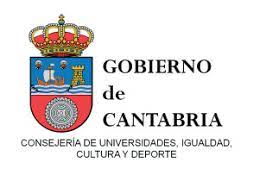Cervantes, Shakespeare and the turn towards the animal
DOI:
https://doi.org/10.55422/bbmp.184Keywords:
Cervantes, Shakespeare, Animal, Hunt, EcocriticismAbstract
Over the past two decades, the Humanities are no longer regarded as solely the realm of humans as the discipline is expanded and reinterpreted to include nonhumans. Moreover, the rise of literary consciousness about the presence and significance of animals in human culture during the early modern period is enhancing our understanding of characterization, mentalities, literary genres, material culture, philosophical ethics and ecocriticism. Cervantes and Shakespeare both incorporate real and conceptual animals into their works. These animal characters are significant and productive subjects for analyzing the works in which they appear and expanding the contexts within which the authors wrote. To exemplify this «animal turn» in literary studies, this essay examines the hunting episodes in Don Quixote and Love’s Labour’s Lost. I explore the cultural significance of the aristocratic hunt and the authors’ ideas with respect to contemporary debates regarding this popular sport that had broad philosophical, ethical and socio-political repercussions in both countries.
Downloads
Publication Facts
Reviewer profiles N/A
Author statements
Indexed in
- Academic society
- Sociedad Menéndez Pelayo
- Publisher
- Sociedad Menéndez Pelayo
Global Statistics ℹ️
|
201
Views
|
179
Downloads
|
|
380
Total
|
|
References
ALFONSO XI. (1983) Libro de la montería, basado en Escorial MS Y.II.19. Dennis P. Seniff (Ed.) Madison, Wisconsin. The Hispanic Seminary of Medieval Studies.
BALLESTEROS RODRÍGUEZ, Santiago. (2015) Don Quijote: gran madrugador y amigo de la caza. Madrid. La Trébere.
BERRY, Edward. (2001) Shakespeare and the Hunt: A Cultural and Social Study. Cambridge. Cambridge University Press.
BERGMAN, Charles. (2007) «A Spectacle of Beasts. Hunting Rituals and Animal Rights in Early Modern England». A Cultural History of Animals in the Renaissance. Bruce Boehrer (Ed.) Oxford y Nueva York. Berg. 53-73. DOI: https://doi.org/10.5040/9781350049550-ch-002
CARTMILL, Matt. (1995) «Hunting and Humanity in Western Thought». Social Research. 62.3. 773-786.
CERVANTES, Miguel de. (2004) Don Quijote de la Mancha. Madrid. Alfaguara.
CERVANTES, Miguel de. (1982) Novelas ejemplares II. 4ª ed. Harry Sieber (Ed.). Madrid. Cátedra.
DOBSON, Michael. (2000) «A Dog at All Things. The Transformation of the Onstage Canine, 1550-1850». Performance Research. 5.2. 116-124. DOI: https://doi.org/10.1080/13528165.2000.10871736
ERASMO DE ROTTERDAM. (1999) Elogio de locura. Trad., pról. y notas de Pedro Voltes Bou. Alicante. Biblioteca Virtual Miguel de Cervantes.
ERIAS MARTÍNEZ, Alfredo. (1999) «La eterna caza del jabalí». Anuario Brigantino. 22. 317-378.
FUDGE, Erica. (2008) «‘The dog is himself’: Humans, Animals, and Self-Control in The Two Gentlemen of Verona». How To Do Things with Shakespeare. New Approaches, New Essays. Laurie Maguire (Ed.). Oxford. Blackwell. 183-209. DOI: https://doi.org/10.1002/9780470694114.ch8
GREER, Margaret. (2005) «Diana, Venus and Borrowed Dogs: On Hunting in Don Quixote». Cervantes y su mundo. Kurt Reichenberger y Darío Fernández-Morera (Eds.). Kassel. Reichenberger. Tomo III. 201-222.
IRIGOYEN GARCÍA, Javier. (2011) «Diana and Wild Boar Hunting: Refiguring Gender and Ethno-religious Conflict in the Pastoral Imaginary». Bulletin of Hispanic Studies. 88.3. 273-287. DOI: https://doi.org/10.3828/bhs.2011.8
MANNING, Roger B. (1993) Hunters and Poachers. Oxford. Clarendon Press. DOI: https://doi.org/10.1093/acprof:oso/9780198203247.001.0001
MARTÍN, Adrienne L. (2014) «Onstage/Backstage: Animals in the Golden Age Comedia». A Companion to Early Modern Hispanic Theater. Hilaire Kallendorf (Ed.). Leiden/Boston. Brill. 127-144. DOI: https://doi.org/10.1163/9789004263017_010
MARTÍNEZ DE ESPINAR, Alonso. (1976) Arte de Ballestería y Montería. Intro. de Eduardo Trigo de Yarto. Madrid. Ediciones Velázquez.
MORGADO GARCÍA, Arturo. (2011) «Una visión cultural de los animales». Los animales en la historia y en la cultura. Arturo Morgado García y José Joaquín Rodríguez Moreno (Eds.). Cádiz. Universidad de Cádiz. 13-43
MOSTERÍN, Jesús. (2014) El triunfo de la compasión. Nuestra relación con los otros animales. Madrid. Alianza.
SÁNCHEZ GARRIDO, Roberto. (2006) «De caza y cazadores. Las construcciones teóricas sobre la actividad cinegética actual a partir de los discursos de sus actores». Gazeta de Antropología. 22. Artículo 18. http://hdl.handle.net?10481/7100. DOI: https://doi.org/10.30827/Digibug.7100
SCHWARTZ, Lía. (2010) «Cervantes, lector de Jenofonte, y las “Obras de Xenophonte” traducidas por Diego Gracián» RILCE. 26.1. 202-213. DOI: https://doi.org/10.15581/008.26.4713
SHAKESPEARE, William. (2002) The Complete Works. Stephen Orgel y A.R. Braunmuller (Eds.). Nueva York y Londres. Penguin Books.
SHAPIRO, Kenneth Joel. «Human-Animal Studies: Growing the Field, Applying the Field». Ensayo inédito disponible en Academia.edu.
SHAPIRO, Kenneth y Margo DEMELLO. (2000). «The State of Human-Animal Studies». Society & Animals. 18. 307-318. DOI: https://doi.org/10.1163/156853010X510807
SHAPIRO, Kenneth y Marion W. COPELAND. (2005) «Toward a Critical Theory of Animal Issues in Fiction». Society & Animals. 13.4. 343-346. DOI: https://doi.org/10.1163/156853005774653636
WALKER, Suzanne J. (2007) «Making and Breaking the Stag, the Construction of the Animal in the Early Modern Hunting Treatise». Early Modern Zoology. The Construction of Animals in Science, Literature and the Visual Arts. Karl A.E. Enenkel y Paul J. Smith (Eds.). Leiden/Boston. Brill. 317-337.
Downloads
Published
How to Cite
Issue
Section
License
Copyright (c) 2022 Adrienne L. Martín

This work is licensed under a Creative Commons Attribution-NonCommercial 4.0 International License.







